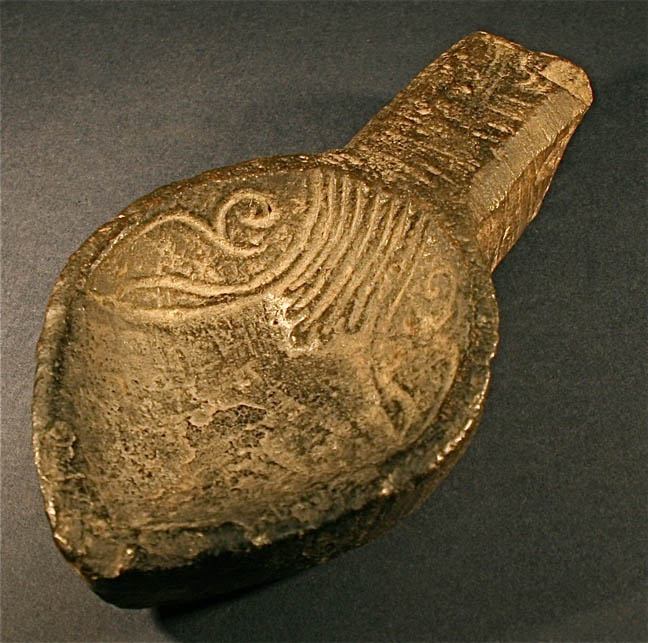

Title: Hand Carved Artifact Stone Marble Antique Oil Lamp Lighting Tool
Shipping: $29.00
Artist: N/A
Period: Antiquity
History: N/A
Origin: Southern Europe > Italy
Condition: Museum Quality
Item Date: N/A
Item ID: 4268
A rare carved stone oil lamp dating back to the 2nd-4th century AD is featured here. The intricately carved marble stone lamp is exceptionally rare and serves as a prime example. Provenance: acquired from the European market through reputable dealers. We believe it to be of Roman origin, showcasing a well-designed marble oil lamp with a short nozzle and a carved handle. This archaeological gem is an ancient stone oil lamp, emphasizing its significance in old societies, particularly during religious rituals. In this specific lamp design, a central chamber is situated within a cup where oil is placed as the fuel source. The intensity of light could be controlled by adjusting the placement of the lamp within the walls of a darkened space, making it a fascinating artifact. This stone marble oil lamp was likely fueled by.
The history of ancient oil lamps is a fascinating journey through time, spanning various civilizations and cultures. Dating back to as early as the 2nd century BC, these lamps were essential tools for lighting in ancient societies. Crafted from materials such as clay, bronze, and even precious stones like marble, these lamps evolved in design and functionality. They played a crucial role in religious rituals, domestic settings, and public spaces, shedding light on the daily lives of people in antiquity. The intricate carvings and unique features of these lamps provide valuable insights into the artistic and technological advancements of bygone eras.
Link: http://en.wikipedia.org/wiki/Stone_carving
Stone carving is an ancient activity where pieces of rough natural stone are shaped by the controlled removal of stone. Owing to the permanence of the material, evidence can be found that even the earliest societies indulged in some form of stone work. The term stone carving is of particular significance to sculptors being a reference to a particular way of producing sculpture, as opposed to modelling in clay or casting. The term also refers to the activity of masons in dressing stone blocks for use in architecture, building or civil engineering. It is also a phrase used by archaeologists, historians, and anthropologists to describe the activity involved in making some types of petroglyphs.
The oldest known works of representational art are stone carvings. Often marks carved into rock or petroglyphs will survive where painted work will not. Prehistoric Venus figurines such as the Venus of Berekhat Ram may be as old as 800,000 years, and are carved in stones such as tuff and limestone. These earliest examples of stone carving are the result of hitting or scratching a softer stone with a harder one, although sometimes more resilient materials such as antlers are known to have been used for relatively soft stone. another early technique was to use an abrasive that was rubbed on the stone to remove the unwanted area.